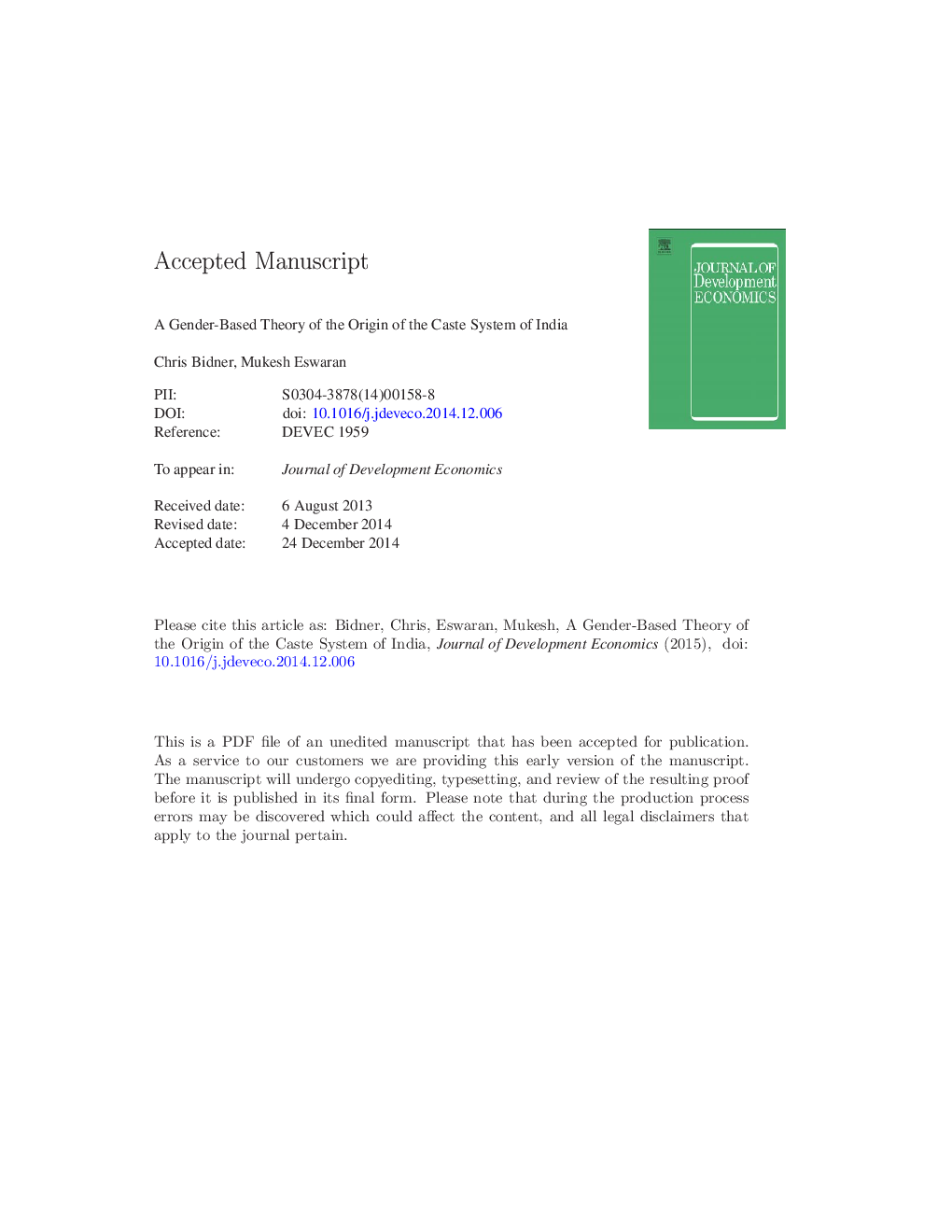| کد مقاله | کد نشریه | سال انتشار | مقاله انگلیسی | نسخه تمام متن |
|---|---|---|---|---|
| 5094452 | 1478497 | 2015 | 46 صفحه PDF | دانلود رایگان |
عنوان انگلیسی مقاله ISI
A gender-based theory of the origin of the caste system of India
ترجمه فارسی عنوان
تئوری مبتنی بر جنسیت منشا سیستم کست در هند
دانلود مقاله + سفارش ترجمه
دانلود مقاله ISI انگلیسی
رایگان برای ایرانیان
کلمات کلیدی
موضوعات مرتبط
علوم انسانی و اجتماعی
اقتصاد، اقتصادسنجی و امور مالی
اقتصاد و اقتصادسنجی
چکیده انگلیسی
We propose a theory of the origins of India's caste system by explicitly recognizing the productivity of women in complementing their husbands' occupation-specific skill. The theory explains the core features of the caste system: its hereditary and hierarchical nature, and its insistence on endogamy (marriage only within castes). Endogamy is embraced by a group to minimize an externality that arises when group members marry outsiders. We demonstrate why the caste system embodies gender asymmetries in punishments for violations of endogamy and tolerates hypergamy (marrying up) more than hypogamy (marrying down). Our model also speaks to other aspects of caste, such as commensality restrictions and arranged/child marriages. We suggest that India's caste system is so unique because the Brahmins sought to preserve and orally transmit the Hindu scriptures for over a millennium with no script. We show that economic considerations were of utmost importance in the emergence of the caste system.
ناشر
Database: Elsevier - ScienceDirect (ساینس دایرکت)
Journal: Journal of Development Economics - Volume 114, May 2015, Pages 142-158
Journal: Journal of Development Economics - Volume 114, May 2015, Pages 142-158
نویسندگان
Chris Bidner, Mukesh Eswaran,
